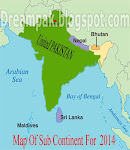In 712 CE, a Syrian Muslim chieftain called Muhammad bin Qasim conquered most of the Indus region for the Umayyad empire, but the instability of the empire resulted in effective control only over Sind and southern Punjab. The provincial capital of "As-Sindh" was at Al-Mansurah, 72 km north of modern Hyderabad. There was gradual conversion to Islam in the south, especially amongst the native Buddhist majority, but in areas north of Multan, Buddhists, Hindus and other non-Muslim groups remained numerous.
In 997 CE, Mahmud of Ghazni conquered the bulk of Khorasan, marched on Peshawar in 1005, and followed it by the conquests of Punjab (1007), Balochistan (1011), Kashmir (1015) and Qanoch (1017). By the end of his reign in 1030, Mahmud's empire extended from Kurdistan in the west to the Yamuna river in the east, and the Ghaznavid dynasty lasted until 1187. Contemporary historians such as Abolfazl Beyhaqi and Ferdowsi described extensive building work in Lahore, as well as Mahmud's support and patronage of learning, literature and the arts.
In 1160, Muhammad Ghori conquered Ghazni from the Ghaznavids and became its governor in 1173. He marched eastwards into the remaining Ghaznavid territory and Gujarat in the 1180s, but was rebuffed by Gujarat's Solanki rulers. In 1186-7, he conquered Lahore, bringing the last of Ghaznevid territory under his control and ending the Ghaznavid empire. Muhammad Ghori returned to Lahore after 1200 to deal with a revolt of the Rajput Ghakkar tribe in the Punjab. He suppressed the revolt, but was killed during a Ghakkar raid on his camp on the Jhelum River in 1206. Muhammad Ghori's successors established the first Indo-Islamic dynasty, the Delhi Sultanate. The Mamluk Dynasty, (mamluk means "slave" and referred to the Turkic slave soldiers who became rulers throughout the Islamic world), seized the throne of the Sultanate in 1211. Several Turko-Afghan dynasties ruled their empires from Delhi: the Mamluk (1211-90), the Khalji (1290-1320), the Tughlaq (1320-1413), the Sayyid (1414-51) and the Lodhi (1451-1526). Although some kingdoms remained independent of Delhi - in Gujarat, Malwa (central India), Bengal and Deccan - almost all of the Indus plain came under the rule of these large Indo-Islamic sultanates. Perhaps the greatest contribution of the sultanate was its temporary success in insulating South Asia from the Mongol invasion from Central Asia in the thirteenth century; nonetheless the sultans eventually lost Afghanistan and western Pakistan to the Mongols (see the Ilkhanate Dynasty).
The sultans (emperors) of Delhi enjoyed cordial relations with Muslim rulers in the Near East but owed them no allegiance. While the sultans ruled from urban centers, their military camps and trading posts provided the nuclei for many towns that sprang up in the countryside. Close interaction with local populations led to cultural exchange and the resulting "Indo-Islamic" fusion has left a lasting imprint and legacy in South Asian architecture, music, literature, life style and religious customs. In addition, the language of Urdu (literally meaning "horde" or "camp" in various Turkic dialects) was born during the Delhi Sultanate period, as a result of the mingling of speakers of Sanskritic prakrits, Persian, Turkish and Arabic languages.
From the 16th to the 19th century CE the formidable Mughal empire covered much of South Asia and played a major role in the economic and cultural development of the region.The empire was one of the three major Islamic states of its day and sometimes contested its northwestern holdings such as Qandahar against the Uzbeks and the Safavid Persians. The Mughals were descended from Persianized Central Asian Turks (with significant Mongol admixture). The third emperor, Akbar the Great, was both a capable ruler and an early proponent of religious and ethnic tolerance and favored an early form of multiculturalism. For a short time in the late 16th century, Lahore was the capital of the empire. The architectural legacy of the Mughals in Lahore includes the Shalimar Gardens built by the fifth emperor, Shahjahan, and the Badshahi Mosque built by the sixth emperor, Aurangzeb.
In 1739, the Persian emperor Nader Shah invaded India, defeated the Mughal Emperor Mohammed Shah, and occupied most of Balochistan and the Indus plain. After Nadir Shah's death, the kingdom of Afghanistan was established in 1747, by one of his generals, Ahmad Shah Abdali and included Kashmir, Peshawar, Daman, Multan, Sind and Punjab. In the south, a succession of autonomous dynasties (the Daudpotas, Kalhoras and Talpurs) had asserted the independence of Sind, from the end of Aurangzeb's reign. Most of Balochistan came under the influence of the Khan of Kalat, apart from some coastal areas such as Gwadar which were ruled by the Sultan of Oman. The Sikh Confederacy (1748-1799) was a group of small states in the Punjab which emerged in a political vacuum created by rivalry between the Mughals, Afghans and Persians.[36] The Confederacy drove out the Mughals, repelled several Afghan invasions and in 1764 captured Lahore. However after the retreat of Ahmed Shah Abdali, the Confederacy suffered instability as disputes and rivalries emerged.The Sikh empire (1799-1849) was formed on the foundations of the Confederacy by Ranjit Singh who proclaimed himself "Sarkar-i-Wala", and was referred to as the Maharaja of Lahore. His empire eventually extended as far west as the Khyber Pass and as far south as Multan. Amongst his conquests were Kashmir in 1819 and Peshawar in 1834, although the Afghans made two attempts to recover Peshawar. After the Maharaja's death the empire was weakened by internal divisions and political mismanagement. The British annexed the Sikh empire in 1849 after two Anglo-Sikh wars.
PAK ELECTRON LTD
14 years ago


0 comments:
Post a Comment